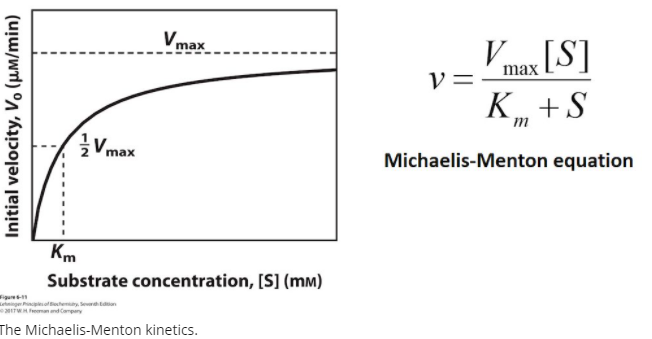Question
Question 1; part 1. What do theterms Kcat, km and Vmax reveal about an enzyme and the reaction itcatalyses? Question 1; part 2. An enzyme
 Question 1; part 1. What do theterms Kcat, km and Vmax reveal about an enzyme and the reaction itcatalyses?
Question 1; part 1. What do theterms Kcat, km and Vmax reveal about an enzyme and the reaction itcatalyses?
Question 1; part 2. An enzyme catalyses the reaction A ? B.The enzyme is at a concentration of 2 nM, the Vmax is 1.2 ?M/s andthe Km for substrate A is 10 ?M. Calculate the initial velocity ofthe reaction when the substrate concentration is (a) 2 ?M, (b) 10?M and (c) 30 ?M.
Question 1; part 3. Calculate the turnover rate of Carbonicanhydrase. Carbonic anhydrase of erythrocytes has a molecularweight of 30 kDa and catalyses the reversible hydration of carbondioxide. If 10 ?g of pure carbonic anhydrase catalyses thehydration of 0.30 g of carbon dioxide in a 1 minute reaction at 37degrees Celsius at Vmax, what is the turnover number (Kcat) ofcarbonic anhydrase (in units per minute).
Initial velocity, Vo (m/min) Vmax Vmax Km Substrate concentration, [S] (mm) Letninger Principles of Biochemy, Seventh Edition 2017 WH and Company The Michaelis-Menton kinetics. V = Vmax [S] K + S Michaelis-Menton equation
Step by Step Solution
3.42 Rating (152 Votes )
There are 3 Steps involved in it
Step: 1
1 Kcat is the turnover number It is defines as the maximum number of chemical conversions of substra...
Get Instant Access to Expert-Tailored Solutions
See step-by-step solutions with expert insights and AI powered tools for academic success
Step: 2

Step: 3

Ace Your Homework with AI
Get the answers you need in no time with our AI-driven, step-by-step assistance
Get Started


